Welcome to the world of birds in the East. East is home to a variety of birds from small songbirds to large raptors. Every region of the East has its own unique selection of birds, and the diversity of species is truly incredible.
There are many opportunities to explore and appreciate the different types of birds in the East, such as bird watching, photography, and even bird rehabilitation.
In this introduction, we will explore some of the most common bird species in the East and discuss the importance of protecting these amazing creatures.
We hope that you will come to appreciate the beauty and variety of birds in the East as much as we do.
1. White-breasted Nuthatch
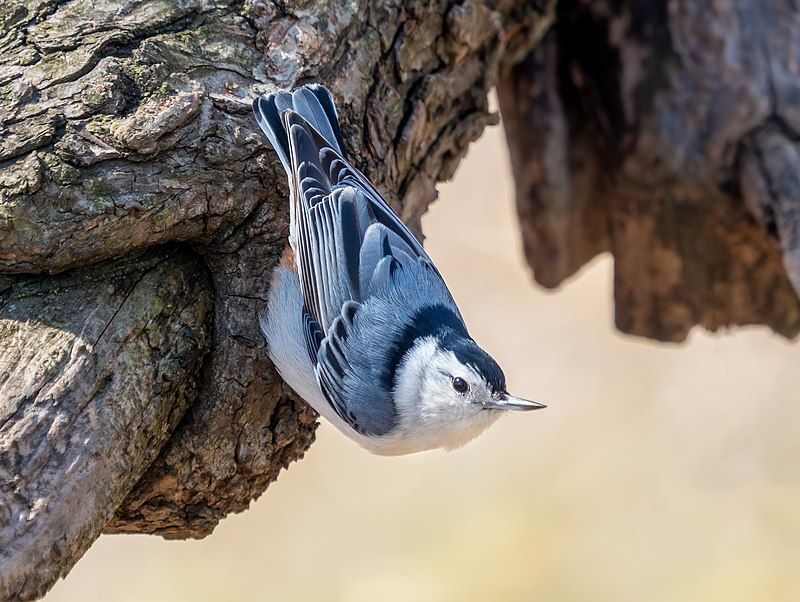
The white-breasted nuthatch is a species of bird from the family Sittidae, which are characterized by their nuthatch-like features. This species of bird is medium-sized, measuring around 15.5 centimeters in length.
They have a white breast, a white belly, a gray back, and a black cap on the top of their head. They also have a short, stout bill.
The white-breasted nuthatch can often be found in deciduous forests and woodlands, where they search for food on the trunks and branches of trees.
They mainly feed on insects, spiders, and other invertebrates. They have a variety of calls including a loud “yank” and a sharp “chick”.
They are also known to use their beaks to dig into tree bark, often uncovering insects and larvae in the process.
These birds are common throughout much of North America and are an important part of the local ecology.
| Kingdom | Animalia |
| Phylum | Chordata |
| Class | Aves |
| Order | Passeriformes |
| Family | Sittidae |
| Genus | Sitta |
| Species | S. carolinensis |
2. American Robin
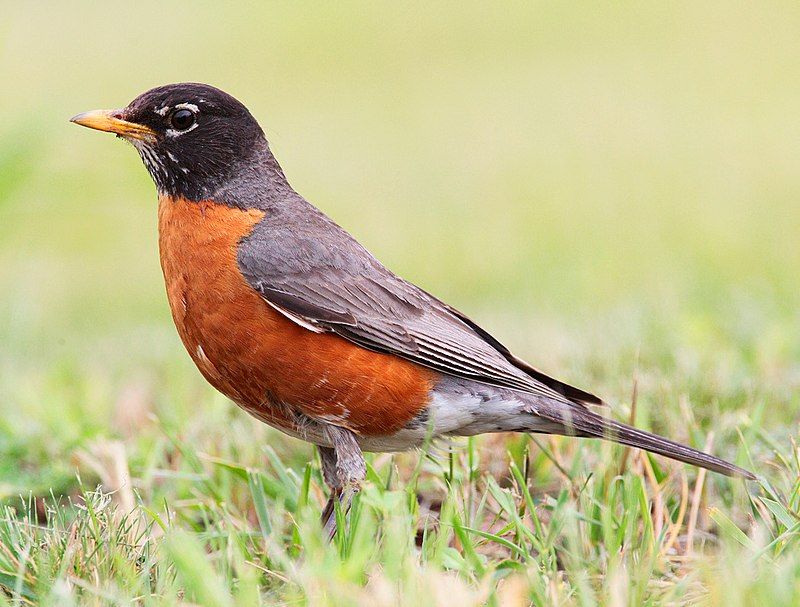
The American robin is a migratory bird of the true thrush genus and Turdidae family, also known as the wider thrush family. It has been given its name due to its close resemblance to the European robin in terms of its reddish-orange breast.
Despite this similarity in appearance, the two species are not closely related; the European robin belongs to the Old World flycatcher family. The American robin is native to North America and can be found throughout the continent.
Its population is steadily increasing due to conservation efforts. The American robin is an omnivore, eating both insects and fruits. It is also known to feed on worms, snails, and other small creatures.
During the winter months, it migrates to the south of the continent in search of warmer weather. The American robin is a social bird that usually lives in flocks, although it can sometimes be seen alone.
It has a distinctive song that consists of a series of short, musical phrases. The American robin is an important part of the North American ecosystem.
It helps control insect populations, disperse seeds, and scavenge for food, making it a beneficial species to humans and the environment.
| Kingdom | Animalia |
| Phylum | Chordata |
| Class | Aves |
| Order | Passeriformes |
| Family | Turdidae |
| Genus | Turdus |
| Species | T. migratorius |
3. Eastern Bluebird
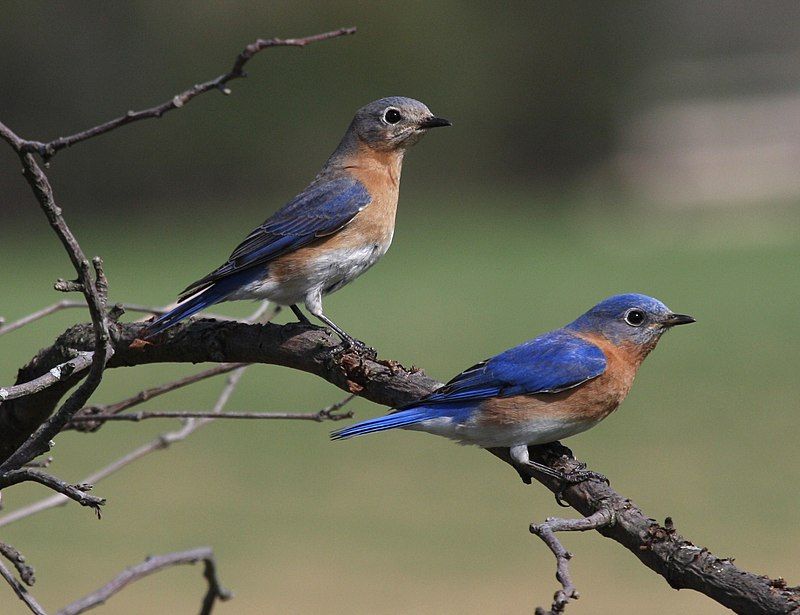
The Eastern Bluebird is a type of thrush found in North America, and is known for its bright blue breeding plumage. It is one of the smaller members of the thrush family, and is migratory, meaning that it will fly to different climates during different times of the year.
It inhabits open woodlands, farmlands, and orchards, and is often seen perched on a wire or open perch. This makes it easy to spot for birders, and the striking blue of the male’s plumage makes it a popular bird to observe and photograph.
The Eastern Bluebird is a beautiful bird, and its colors make it an attractive sight for birders. Its tendency to perch in open, easily observable places makes it a favorite amongst birders, who can easily identify and appreciate the bird.
| Kingdom | Animalia |
| Phylum | Chordata |
| Class | Aves |
| Order | Passeriformes |
| Family | Turdidae |
| Genus | Sialia |
| Species | S. sialis |
4. Eastern Kingbird
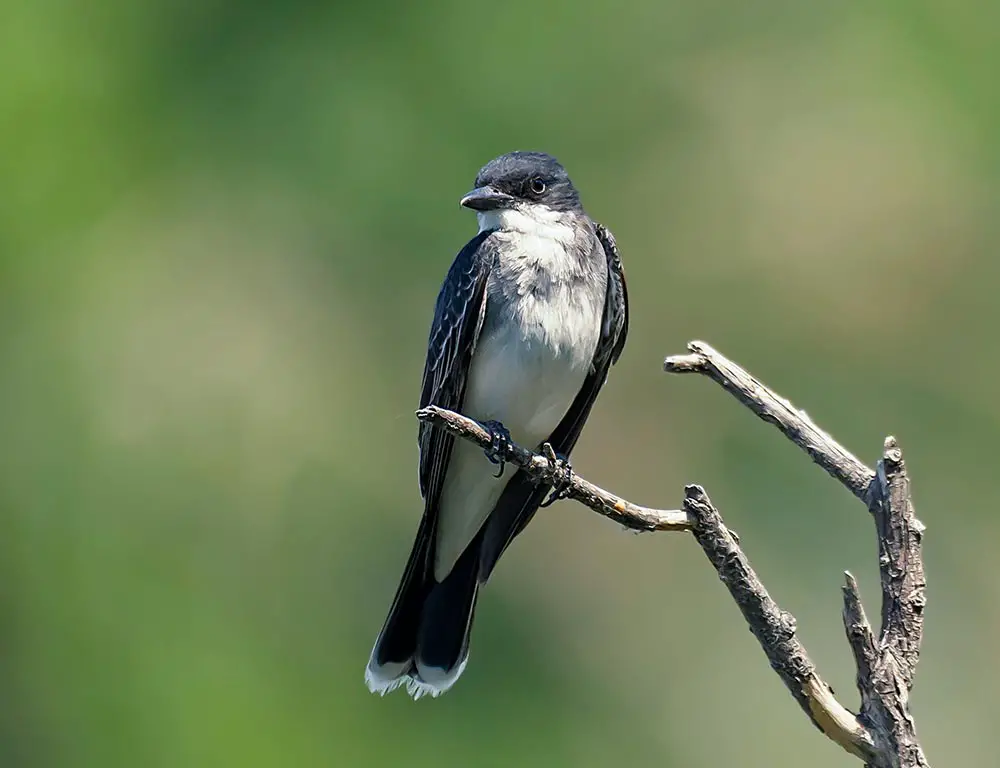
The Eastern Kingbird is a species of tyrant flycatcher, a group of birds that eat mainly insects. It is found throughout the Americas and is distinguished by its gray coloring with a white underside and pointed wings.
Eastern Kingbirds are quite noticeable when they are out in the open, and they can commonly be found in areas that have scattered trees and bushes.
This type of environment is perfect for their foraging habits, as they can easily perch on the trees and bushes and search for insects. Eastern Kingbirds are opportunistic feeders, so they take advantage of any insects they can find while perched in the trees.
They also have a fairly wide range of habitats, as they can be found in grasslands, woodlands, and even near rivers and wetlands. This helps the Eastern Kingbird to be a successful predator in a wide variety of areas.
| Kingdom | Animalia |
| Phylum | Chordata |
| Class | Aves |
| Order | Passeriformes |
| Family | Tyrannidae |
| Genus | Tyrannus |
| Species | T. tyrannus |
5. American Goldfinch
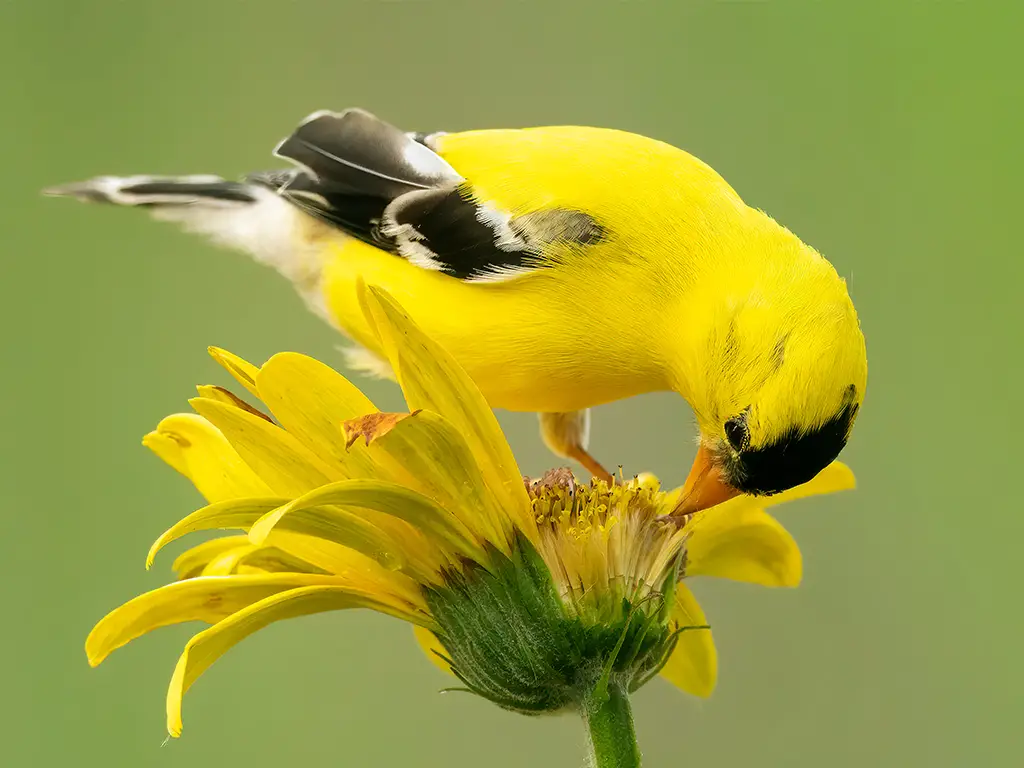
The American goldfinch is a small bird species native to North America. It belongs to the finch family and is known to be migratory. During the breeding season, it can be found in regions ranging from mid-Alberta to North Carolina.
During the winter, it moves southward and can be found just south of the Canada-United States border, all the way down to Mexico. American goldfinches are small birds, with a greyish-brown back and yellow-orange patches on their wings and tail.
They have black and white wings and a white belly. The head of the male is a bright yellow color and they have a distinctive black cap. The female is slightly duller in color.
The American goldfinch feeds mainly on grass and weeds and is known to eat small insects, spiders, and other invertebrates. During the winter, they will also eat seeds from trees and shrubs.
They are known to flock together during the winter and can be found in open fields and meadows. American goldfinches are considered to be one of the most popular birds in North America. They are a highly sought-after species by birdwatchers and photographers alike.
Their vibrant colors and unique ability to migrate make them a joy to watch.
| Kingdom | Animalia |
| Phylum | Chordata |
| Class | Aves |
| Order | Passeriformes |
| Family | Fringillidae |
| Genus | Spinus |
| Species | S. tristis |
6. House Sparrow
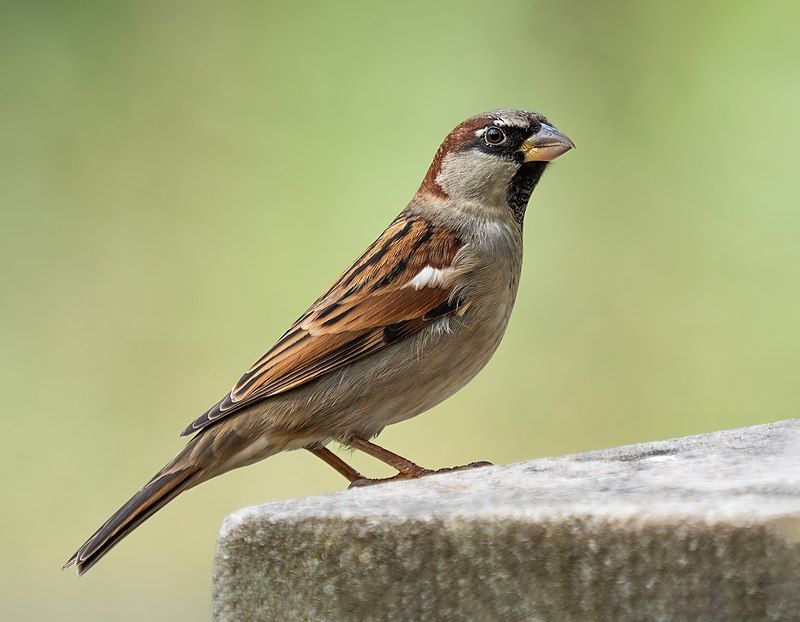
The house sparrow is a very common bird found in almost all parts of the world. It belongs to the family of sparrows, Passeridae. It is a small bird of average length, measuring about 16 cm from beak to tail. It is light weight, with an average mass of 24-39.5 g.
The males of this species are much brighter in color, having black, white and brown markings. On the other hand, the females and the young birds are brown and grey in color. This species is very social in nature and can often be found living in large groups.
They are also known to nest in colonies in sheltered places.
| Kingdom | Animalia |
| Phylum | Chordata |
| Class | Aves |
| Order | Passeriformes |
| Family | Passeridae |
| Genus | Passer |
| Species | P. domesticus |
7. American Crow
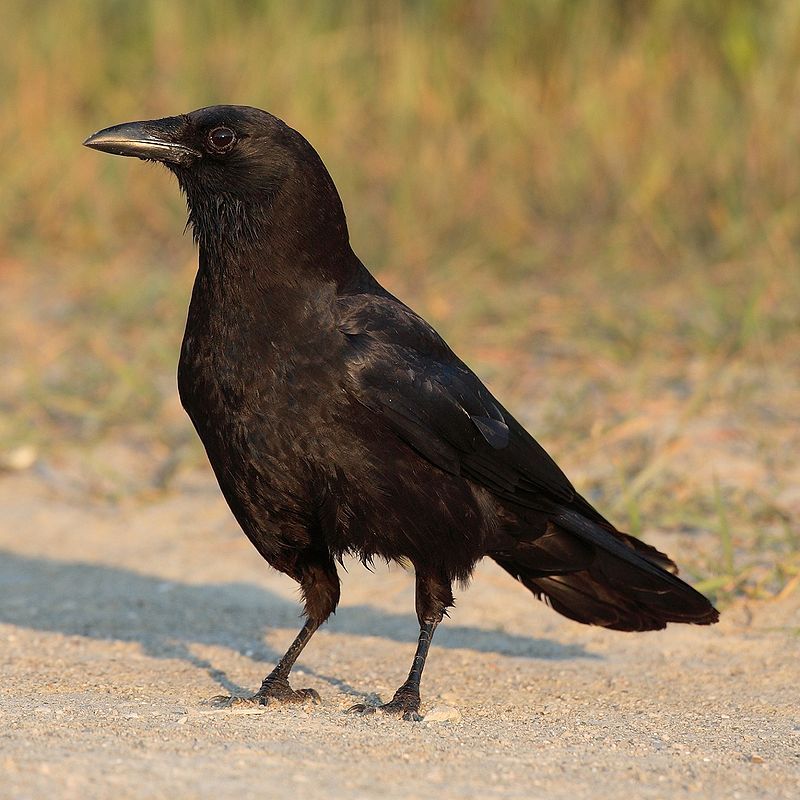
The American crow is a species of bird that belongs to the Corvidae family. It can be found all over North America and is considered a common species. It is similar to two other species of crow that can be found in Eurasia, the carrion crow, and the hooded crow.
All three species of crow occupy the same habitat and share the same ecological niche. The American crow is a large passerine bird, with a wingspan measuring up to 17 inches across.
It is a highly adaptable species, able to survive in a wide array of habitats, from forests to deserts to urban areas. The American crow is omnivorous, feeding on both plant and animal matter, including insects, fruits, grains, small animals, and carrion.
It is a social bird, often forming large communal roosts in the winter. American crows are known to use tools and show some level of intelligence. They are also known for their loud and distinctive call, which is often heard in the early morning and late afternoon.
| Kingdom | Animalia |
| Phylum | Chordata |
| Class | Aves |
| Order | Passeriformes |
| Family | Corvidae |
| Genus | Corvus |
| Species | C. brachyrhynchos |
8. Red-winged Blackbird
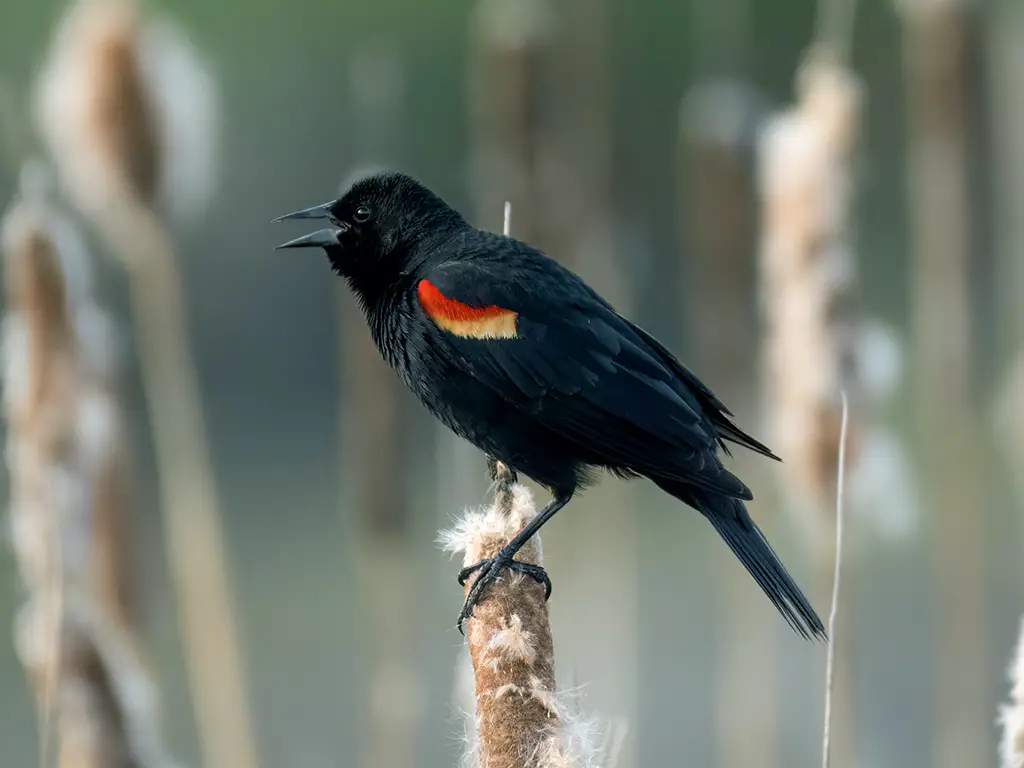
The red-winged blackbird is a type of passerine bird found in many parts of North America and Central America. Passerine birds, also known as perching birds or songbirds, are the most common type of bird and makeup over half of all bird species.
The family Icteridae to which the red-winged blackbird belongs includes many different species of birds, such as orioles, meadowlarks, and grackles. The red-winged blackbird is a medium-sized bird that can reach a length of up to 8.5 inches.
It has jet-black feathers with a distinctive red and yellow wing patch that can be seen when the bird is in flight. It also has a yellow shoulder patch and a yellow stripe along its eyes.
The male of the species is more colorful than the female, with brighter red and yellow patches. The red-winged blackbird is a social bird that can be seen in large flocks. It is found in a variety of habitats such as meadows, marshes, fields, and woodlands.
Its diet consists mainly of insects, grains, and seeds. It is also known to feed on fruits, berries, and nectar. The red-winged blackbird is a popular bird among birdwatchers and is a common sight in many parts of North America and Central America.
Its cheerful song is a familiar sound in the spring and summer months. The red-winged blackbird is a beautiful and unique bird that is sure to bring a smile to any nature lover.
| Kingdom | Animalia |
| Phylum | Chordata |
| Class | Aves |
| Order | Passeriformes |
| Family | Icteridae |
| Genus | Agelaius |
| Species | A. phoeniceus |
9. Northern Cardinal
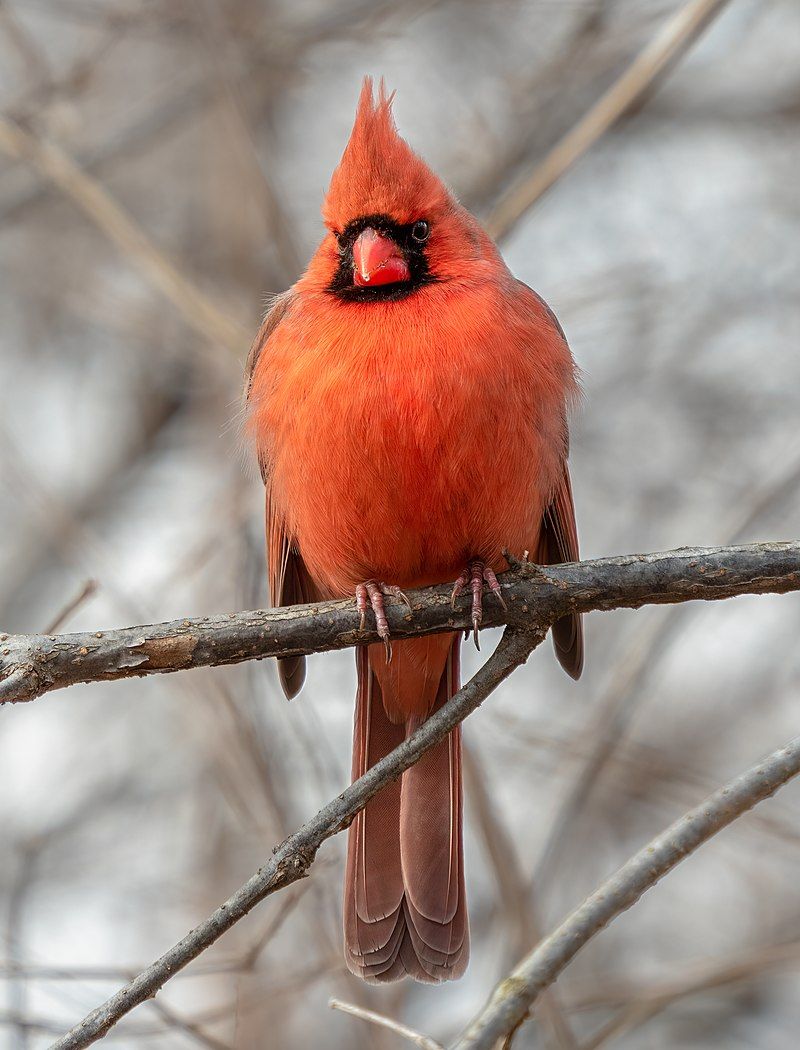
The northern cardinal is a vibrant and eye-catching bird. It is distinctively recognized by its bright red feathers and vibrant crest. It is commonly known as the redbird, common cardinal, red cardinal, or just cardinal.
It is a member of the genus Cardinalis, which is part of a larger family of birds called cardinals. The northern cardinal has a wide range of habitats, from woodlands to backyards. They are commonly seen in the eastern and central parts of North America.
Cardinals are active during the day, which makes them easy to spot. They feed on a variety of foods, such as insects, fruits, and seeds. The male northern cardinal is particularly striking, with its bright red feathers and black face mask.
The female is less vibrant, with brownish-gray feathers and a prominent reddish crest. Both male and female cardinals have a loud and distinct chirp. The northern cardinal is a popular bird among birdwatchers and backyard birders alike.
Its vibrant colors and unmistakable chirping make it a delightful addition to any backyard.
| Kingdom | Animalia |
| Phylum | Chordata |
| Class | Aves |
| Order | Passeriformes |
| Family | Cardinalidae |
| Genus | Cardinalis |
| Species | C. cardinalis |
10. Indigo Bunting
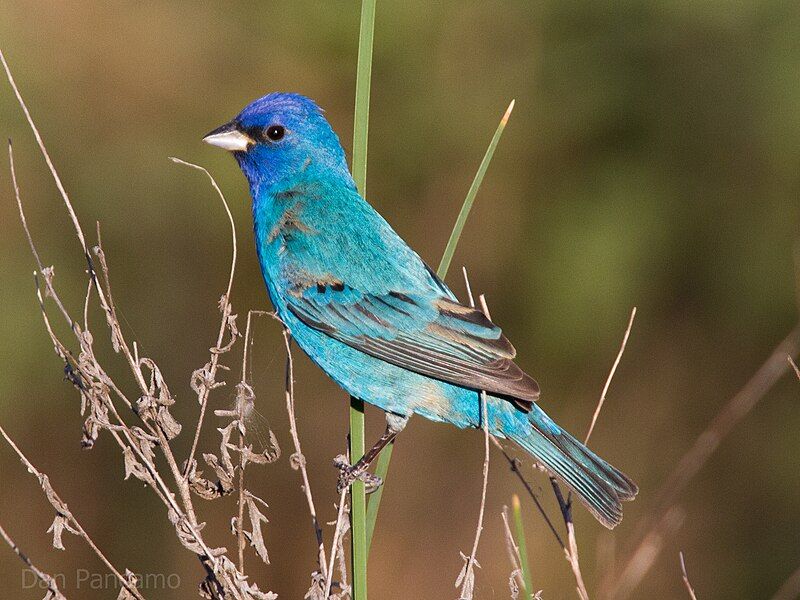
The indigo bunting is a small, seed-eating bird that belongs to the cardinal family, Cardinalidae. It is a migratory species, meaning that it moves from one area to another in cycles.
During the breeding season, it travels from southern Canada to northern Florida, while during the winter it migrates from southern Florida to northern South America. It typically navigates during its migratory period by using the stars, which means it flies at night.
This is an effective way of navigating since the stars provide a constant reference point so the bird can maintain its orientation. The indigo bunting is one of many species that rely on the stars for navigation during its migrations.
| Kingdom | Animalia |
| Phylum | Chordata |
| Class | Aves |
| Order | Passeriformes |
| Family | Cardinalidae |
| Genus | Passerina |
| Species | P. cyanea |
11. Northern Mockingbird
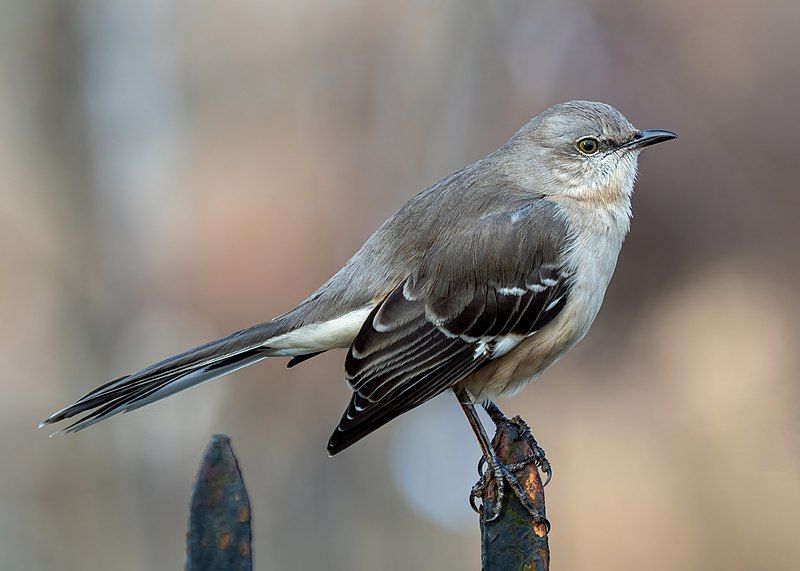
The northern mockingbird is a species of mockingbird commonly found in North America. It is a permanent resident in the area, but during harsh weather, some of the birds may migrate south.
The northern mockingbird is not a common sight in Europe, as it has only been seen there on rare occasions.The northern mockingbird is mostly found in North America and is easily recognizable due to its distinctive song and call.
Its song is a mix of different sounds, including other birds’ songs, and it sings all day long. The mockingbird is known for its ability to imitate other birds and even other animals.
It has a grey-brown body, white to light gray feathers, a white belly, and black wings and tail with white spots. The northern mockingbird is mainly a permanent resident, but in the winter, some birds may migrate south.
This species can be found in open areas, such as grasslands and pastures. It prefers habitats with dense shrubs and trees to nest in, but it also likes to perch in open areas to sing.
The mockingbird’s diet consists of mainly insects, but it also eats fruits, berries, and grains. Although the northern mockingbird is mainly found in North America, it has occasionally been spotted in Europe. This is a rare occurrence, as the species is not native to Europe.
It is believed that the birds may have been transported from North America by ship. The northern mockingbird is an important part of the North American ecosystem.
Its presence provides an important food source for other birds, and its song is a common sound of the North American landscape. The bird is also a symbol of freedom and resilience, as it has been able to survive and thrive in many different environments.
| Kingdom | Animalia |
| Phylum | Chordata |
| Class | Aves |
| Order | Passeriformes |
| Family | Mimidae |
| Genus | Mimus |
| Species | M. polyglottos |
12. Blue Jay
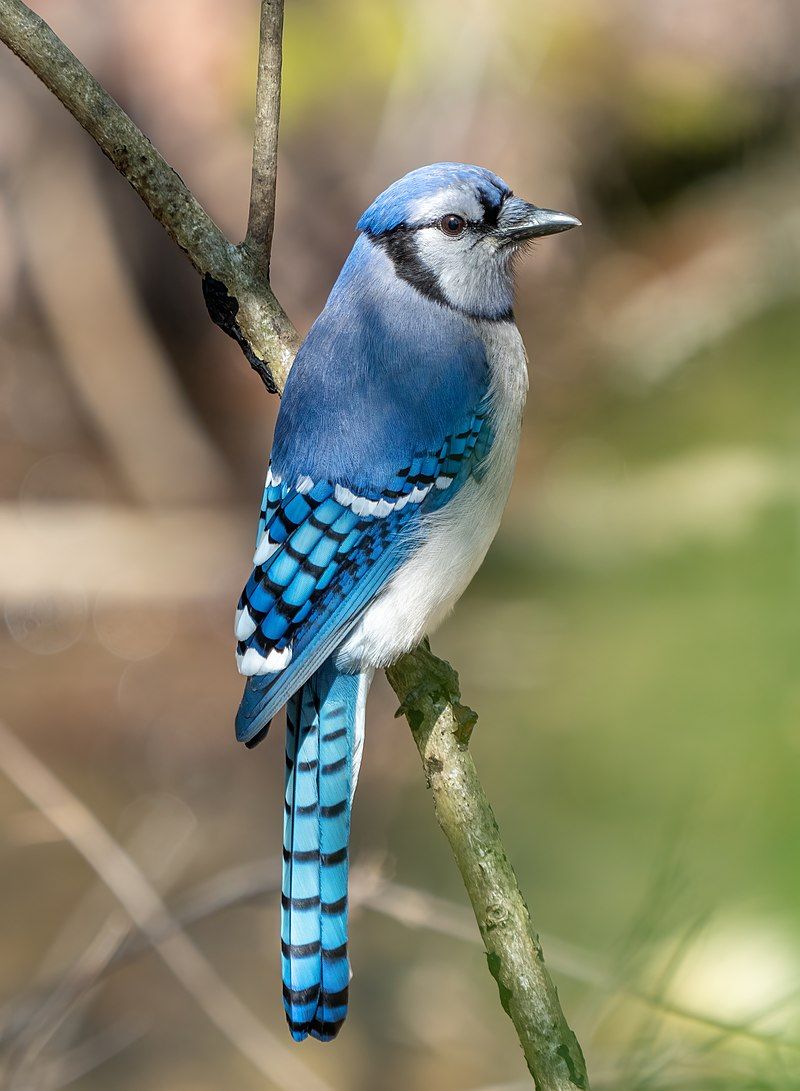
The blue jay is a type of bird that is part of the Corvidae family. It is native to eastern North America and is found across a large range. It lives in most of the eastern and central United States, and some eastern populations may migrate.
Additionally, blue jays are found in Newfoundland, Canada, and breed in southern Canada. This shows that blue jays are quite widespread and have a large range throughout North America.
They are known for their bright blue feathers and distinctive calls, which can be heard in many backyards. They are also known for their ability to adapt to a variety of habitats, from suburban areas to woodlands.
Blue jays are quite common, and can often be seen in parks, gardens, and even backyards.
| Kingdom | Animalia |
| Phylum | Chordata |
| Class | Aves |
| Order | Passeriformes |
| Family | Corvidae |
| Genus | Cyanocitta |
| Species | C. cristata |
13. Eastern Phoebe
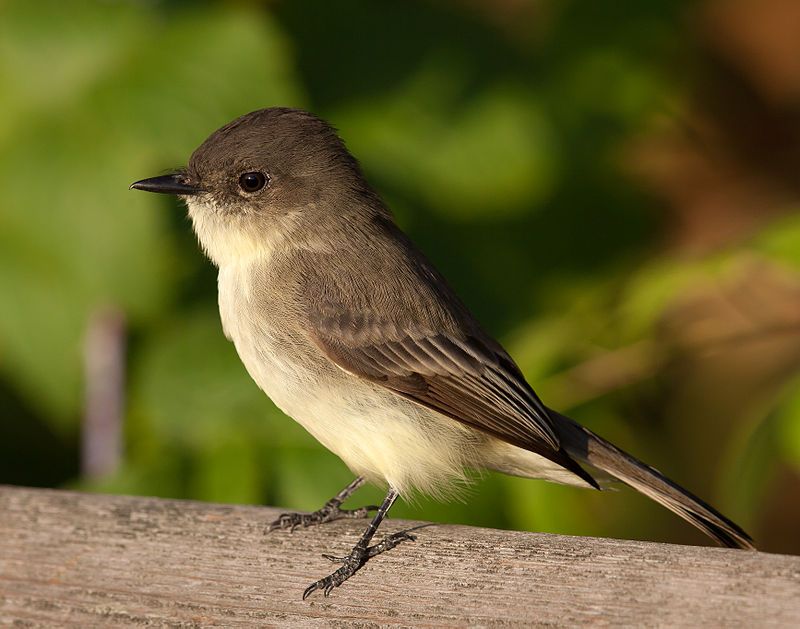
The eastern phoebe (Sayornis phoebe) is a small passerine bird, belonging to the genus Sayornis. The genus name, Sayornis, is derived from Charles Lucien Bonaparte’s name for Say’s phoebe, Muscicapa saya, and the Ancient Greek word for ‘bird’, ornis.
This is an example of a species being named after a person as an honor and a tribute. Charles Lucien Bonaparte, a French ornithologist, was a nephew of Napoleon Bonaparte and a renowned naturalist.
He was also the first person to describe the Say’s phoebe, hence the species name. The eastern phoebe is a migratory species, with a large range that covers much of North America. It is greyish-brown in color with a white throat and a distinct eye ring.
It is a common sight around water, often perched on branches or posts, watching for insects to eat.
| Kingdom | Animalia |
| Phylum | Chordata |
| Class | Aves |
| Order | Passeriformes |
| Family | Tyrannidae |
| Genus | Sayornis |
| Species | S. phoebe |
14. Ruby-throated Hummingbird
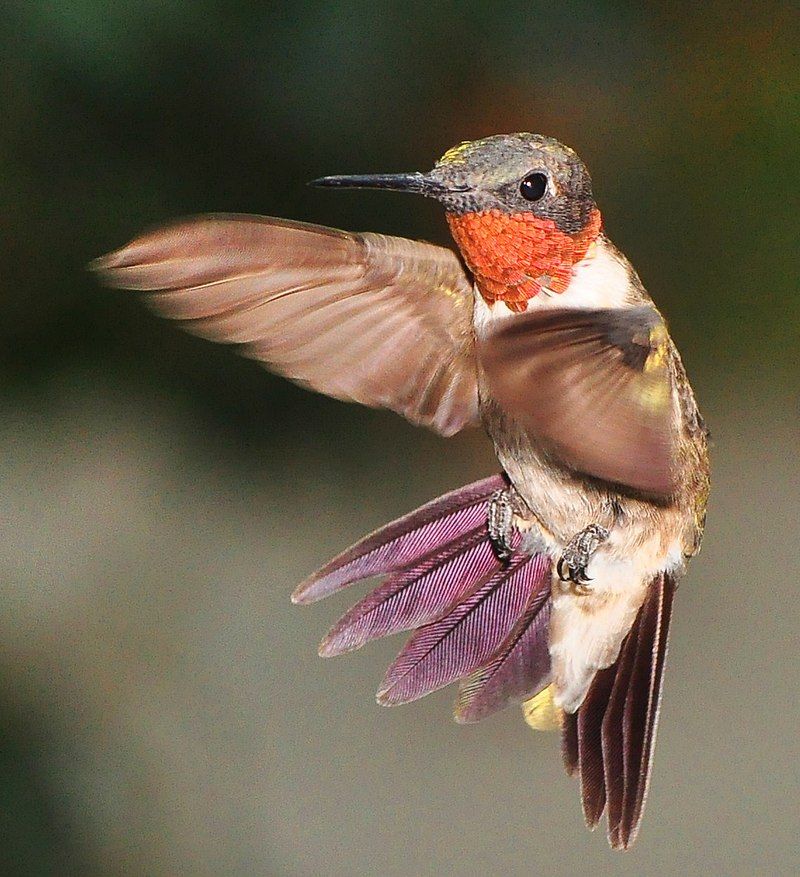
The ruby-throated hummingbird is a species of hummingbird found in North America. It migrates from the south to the north during the summer months to breed. In the winter, it spends its time in Central America, Mexico, and Florida.
During the summer, it can be found in Canada and other parts of the eastern United States. The ruby-throated hummingbird is a fascinating species. It has a unique migration pattern that requires it to travel long distances twice a year.
To make the trip, it must build up a large amount of fat reserves to provide it with the energy it needs for the journey.
This species is also known for its beautiful ruby-red throat, which is a defining characteristic of the species. The ruby-throated hummingbird is an important species for many ecosystems.
It is a pollinator for many plants and helps to maintain a healthy balance in the environment. Additionally, it is also a prey species for many predators such as hawks and other birds of prey. Overall, the ruby-throated hummingbird is a fascinating and important species.
Its migration pattern is unique and helps to maintain the balance of many ecosystems. Its beautiful ruby-red throat is a defining characteristic and helps to distinguish it from other species of hummingbirds.
It is an important species that helps to keep many ecosystems healthy and balanced.
| Kingdom | Animalia |
| Phylum | Chordata |
| Class | Aves |
| Clade | Strisores |
| Order | Apodiformes |
| Family | Trochilidae |
| Genus | Archilochus |
| Species | A. colubris |
15. European Starling
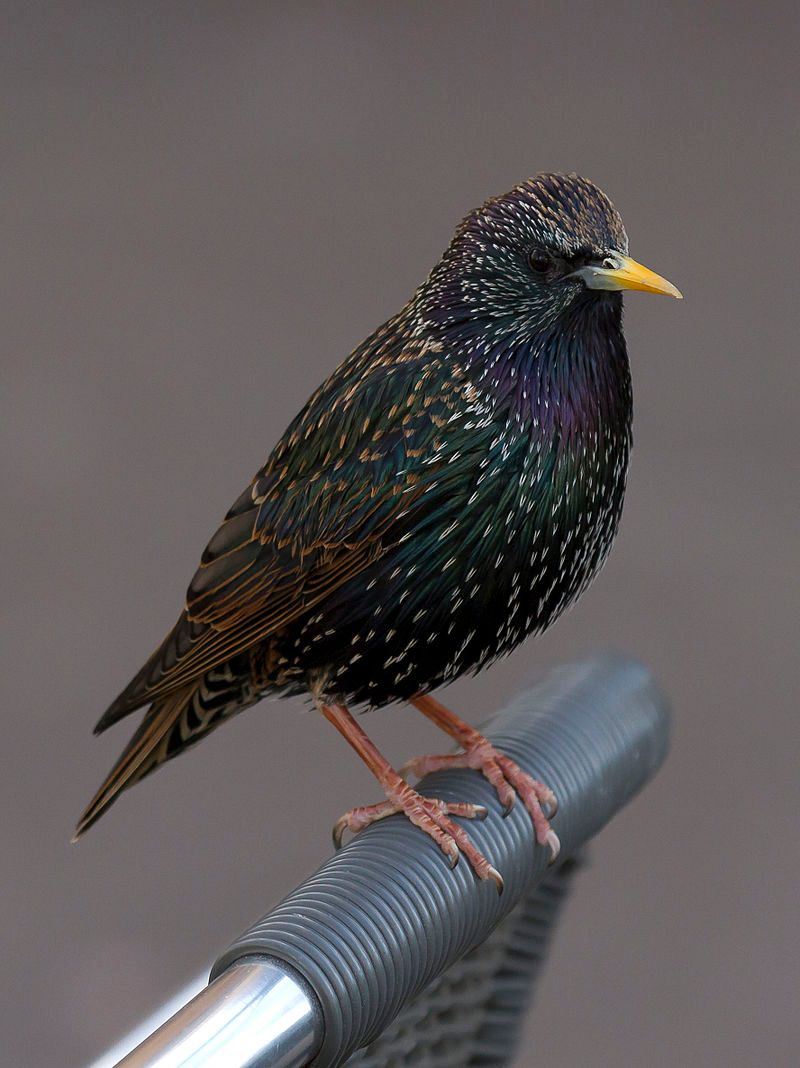
The common starling is a type of bird that is found throughout much of the world.
Also known as the European starling in North America and simply the starling in Great Britain and Ireland, the common starling is a medium-sized passerine bird that belongs to the starling family, Sturnidae.
The common starling is a very adaptable species and is found in a wide range of habitats, ranging from open woodlands to urban areas. It is a highly social species that can form large flocks, sometimes numbering in the thousands.
Common starlings have a wide variety of calls and songs and are often seen performing elaborate aerial displays. They are omnivorous, feeding on both insects and fruits.
Common starlings also play an important role in the environment, helping to disperse the seeds of plants and shrubs.
| Kingdom | Animalia |
| Phylum | Chordata |
| Class | Aves |
| Order | Passeriformes |
| Family | Sturnidae |
| Genus | Sturnus |
| Species | S. vulgaris |
16. Cuckoos
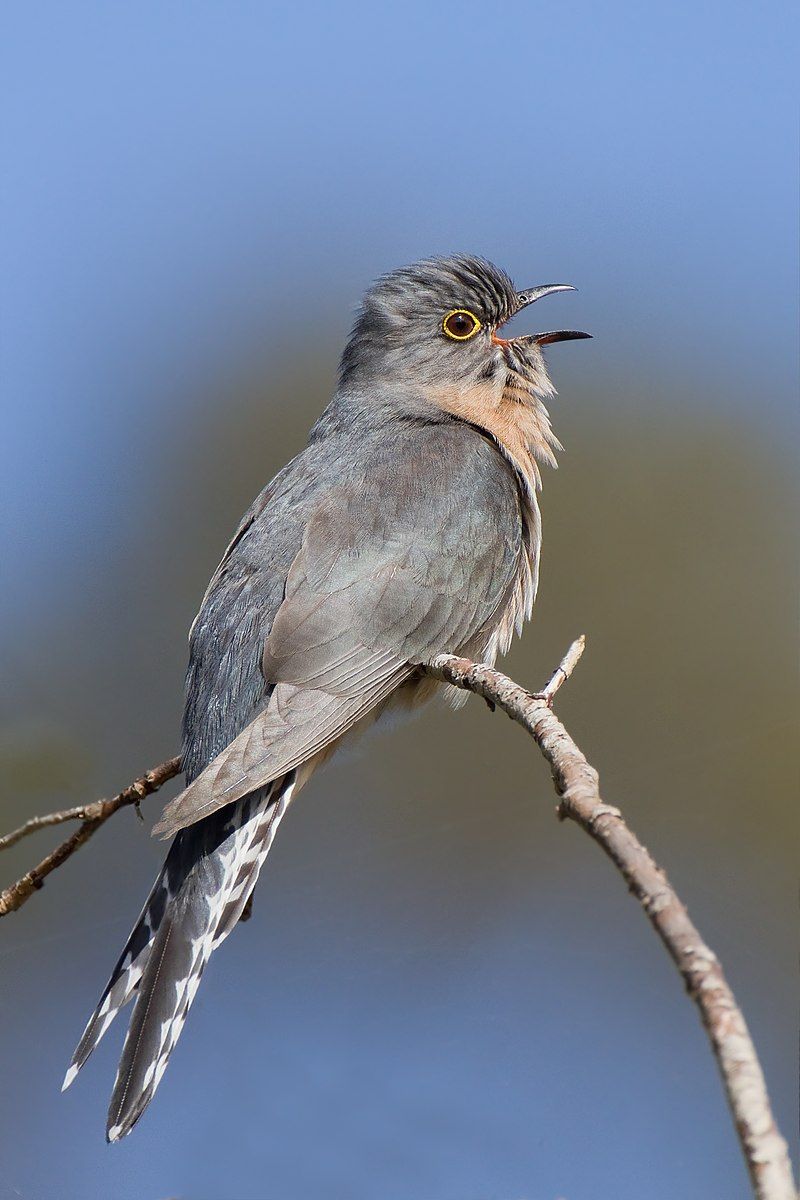
Cuckoos are a family of birds, Cuculidae, that belong to the order Cuculiformes. This family contains many species, such as the common or European cuckoo, roadrunners, koels, malkohas, couas, coucals, and anis.
The coucals and anis are sometimes considered different families, Centropodidae and Crotophagidae respectively. Cuckoos are found all over the world and can be identified by their distinctive calls.
They often live in open woodlands and shrubs and feed on insects, fruits, and other small animals. They typically build their nests high in trees or shrubs, where they can be safe from predators.
Cuckoos are important members of the avian community, as they help to keep the insect population in check.
| Kingdom | Animalia |
| Phylum | Chordata |
| Class | Aves |
| Clade | Otidimorphae |
| Order | Cuculiformes |
| Family | Cuculidae |
17. Red-bellied Woodpecker
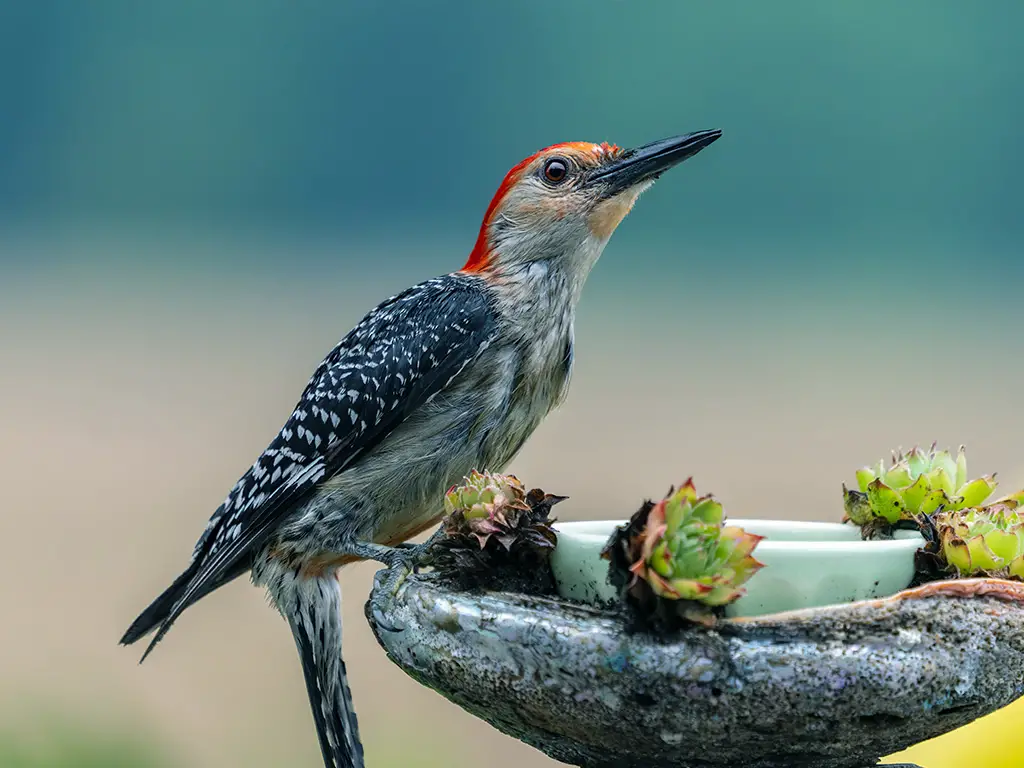
The red-bellied woodpecker is a species of woodpecker native to the eastern United States. It is a medium-sized bird, with a length of approximately 7-9 inches. Its coloring includes a bright red head, neck, and breast, with a black-and-white barred back and wings.
The name of the bird is derived from its bright red belly. The red-bellied woodpecker’s range extends from Florida in the south up to Canada in the north. It is a very common bird in much of its range and is often seen in woodlands, parks, and residential areas.
During the breeding season, its loud, distinctive calls can be heard in many areas. The red-bellied woodpecker typically feeds on insects, such as ants, beetles, and caterpillars, as well as fruits and nuts.
It uses its strong beak to peck at tree bark in search of food, and its long tongue to extract food from deep in the crevices of trees. It also visits bird feeders and will occasionally raid the nests of other birds for food.
The red-bellied woodpecker is an important part of the ecosystem of the eastern United States. Its diet of insects helps to control insect populations, while its presence in woodlands also helps to disperse seeds and maintain the health of the forest.
This species is a very interesting and unique bird and is a delight to birdwatchers and nature lovers alike.
| Kingdom | Animalia |
| Phylum | Chordata |
| Class | Aves |
| Order | Piciformes |
| Family | Picidae |
| Genus | Melanerpes |
| Species | M. carolinus |
18. Northern Flicker
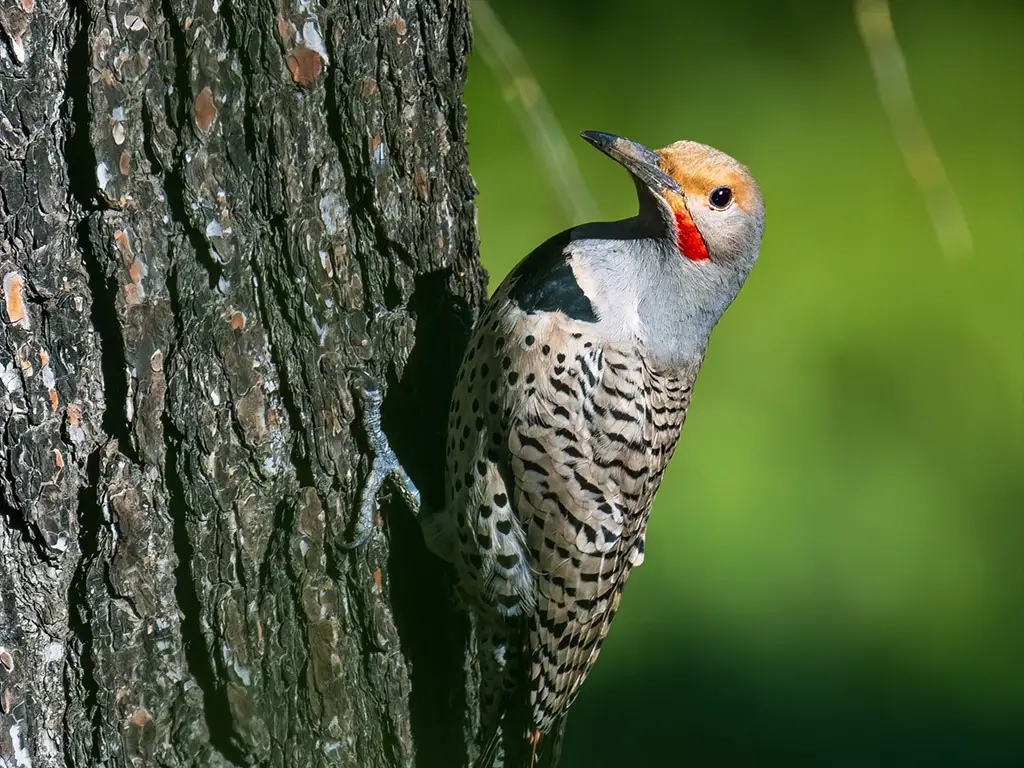
The northern flicker, or common flicker, is a species of woodpecker that is native to much of North America, Central America, Cuba, and the Cayman Islands.
It is considered to be a medium-sized bird, typically measuring between 10 and 12 inches in length and having a wingspan of up to 17 inches. The northern flicker has a reddish-brown back and wings with white barring, as well as a light-colored underbelly.
The underside of its wings and tail are usually black with white spotting.
Its bill is long and curved, and its head is adorned with a black “moustache” and a red crescent on the back of its head. The northern flicker primarily eats ants and other insects, but can also be found eating fruit and nuts.
It can fly quickly and it often forages on the ground. The northern flicker lives in open woodlands, parks, and yards, and will often make a nest in a hollow tree.
It is well-known for its loud, rattling call. The northern flicker is one of the few woodpecker species that migrates. It typically travels south to more temperate climates during the winter months, returning to its northern home in the spring.
It is an important species in North American ecosystems, providing food sources for other birds and mammals, and helping to keep insect populations in check.
| Kingdom | Animalia |
| Phylum | Chordata |
| Class | Aves |
| Order | Piciformes |
| Family | Picidae |
| Genus | Colaptes |
| Species | C. auratus |
19. Wood Duck
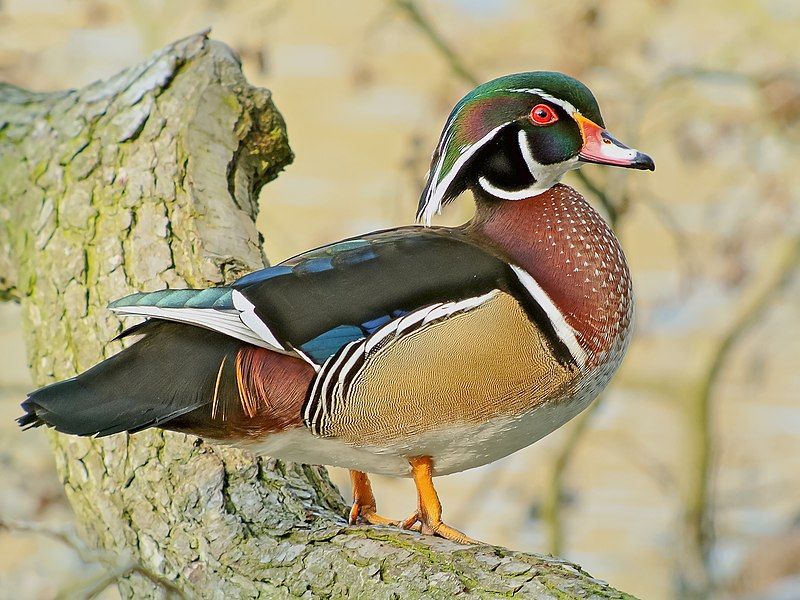
The wood duck, also known as the Carolina duck, is a species of duck that is native to North America. It belongs to the perching duck family, which includes ducks that prefer to spend much of their time on land or in trees, rather than in the water.
The drake wood duck is particularly striking in appearance, with its distinctive plumage of iridescent colors including green, purple, blue and red. This makes it one of the most eye-catching waterfowl species in North America.
The female wood duck has a mottled brown-and-white plumage, which blends in with its natural habitat and provides camouflage from predators. The wood duck is also distinguished by its long, spindly legs and a crest on its head.
The wood duck is a common sight in wetlands and wooded areas across North America, where they feed on aquatic plants such as water lilies, and insects, crustaceans, and small fish.
| Kingdom | Animalia |
| Phylum | Chordata |
| Class | Aves |
| Order | Anseriformes |
| Family | Anatidae |
| Genus | Aix |
| Species | A. sponsa |
20. Eastern Towhee
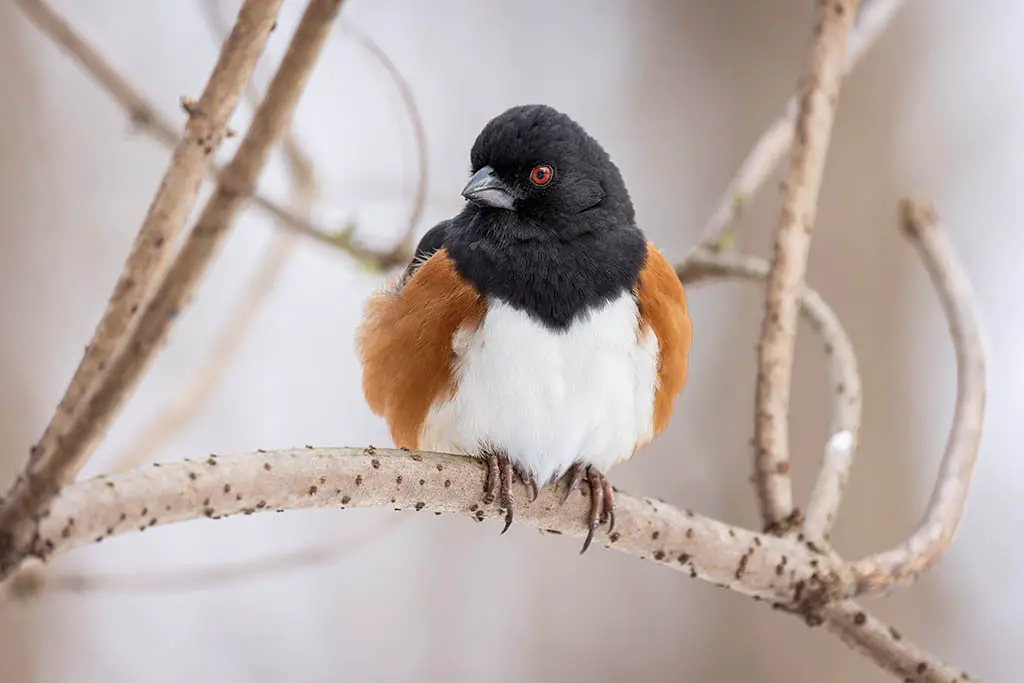
The eastern towhee is a large bird found in the New World and is classified as a sparrow. In the past, this species and the spotted towhee were seen as one species, called the rufous-sided towhee. However, in more modern times, their taxonomy has been a matter of debate.
The eastern towhee has a specific breeding habitat, which consists of brushy areas across eastern North America. This bird prefers to make its home in areas of thick vegetation, such as forests, meadows, and wetlands.
Its habitat also includes gardens, orchards, and agricultural areas. This bird needs a location with plenty of shrubs and trees to build its nest and find food. These birds tend to stay near their nesting area and rarely travel far from their home.
The eastern towhee is an important part of the natural ecosystem in its habitat. This bird helps to keep its population in check by eating insects and other invertebrates, such as caterpillars, spiders, and snails. Additionally, these birds are also important seed dispersers.
They feed on different types of seeds and then spread them throughout their habitat. This helps to spread the population of various plants, which in turn provides food and shelter for other species.
The eastern towhee is an important part of its habitat, and its taxonomy is still a matter of debate. Despite this, it is still a valuable part of the environment and its presence is essential for the health of its ecosystem.
| Kingdom | Animalia |
| Phylum | Chordata |
| Class | Aves |
| Order | Passeriformes |
| Family | Passerellidae |
| Genus | Pipilo |
| Species | P. erythrophthalmus |
21. White-throated Sparrow
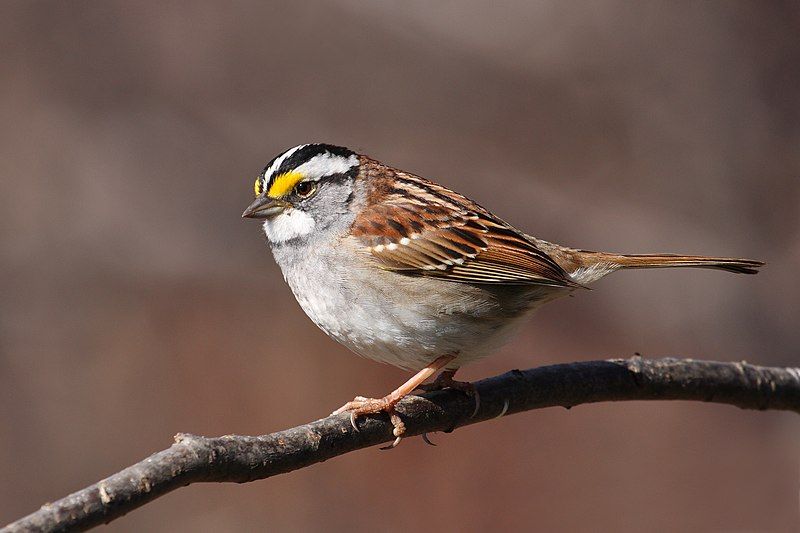
The white-throated sparrow is a small, songbird species that belongs to the family of birds known as Passerellidae. These birds are found throughout much of North America, particularly in the eastern and central regions of the continent.
They have a distinctive white throat, which is a key identifying feature and makes them easy to spot. The white-throated sparrow is typically found in shrublands, woodlands, and even suburban areas, and they are especially fond of dense thickets and brush.
Their diet consists of insects, seeds, and berries, and they are known to be quite vocal, producing a variety of melodic songs. They are also known to form flocks during migration and in winter.
White-throated sparrows are an important part of the North American ecosystem, and their presence is essential for maintaining healthy, balanced habitats.
| Kingdom | Animalia |
| Phylum | Chordata |
| Class | Aves |
| Order | Passeriformes |
| Family | Passerellidae |
| Genus | Zonotrichia |
| Species | Z. albicollis |
22. Baltimore Oriole
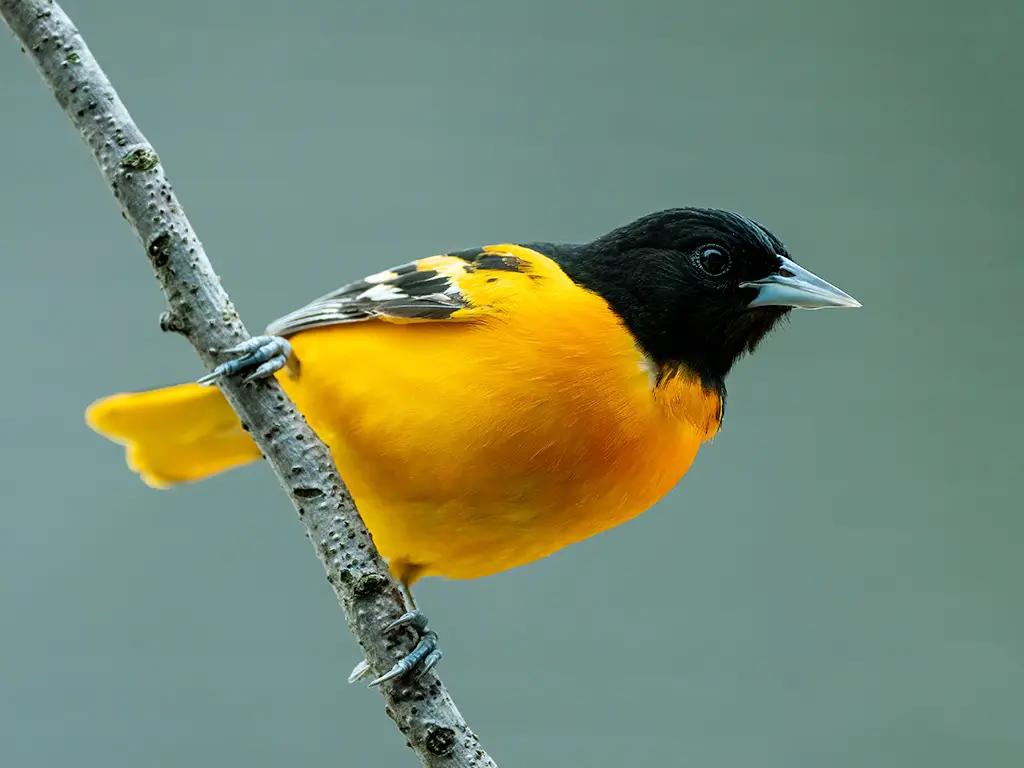
The Baltimore oriole is a type of blackbird belonging to the family Icteridae. It is native to Eastern North America, where it migrates and breeds annually. This small bird is easily recognizable due to its striking black and orange colors.
Its name is a reference to the coat-of-arms of Lord Baltimore from the 17th century, which had a similar color scheme. The Baltimore oriole is a popular species due to its colorful markings and melodious song.
| Kingdom | Animalia |
| Phylum | Chordata |
| Class | Aves |
| Order | Passeriformes |
| Family | Icteridae |
| Genus | Icterus |
| Species | I. galbula |
23. Yellow-rumped Warbler
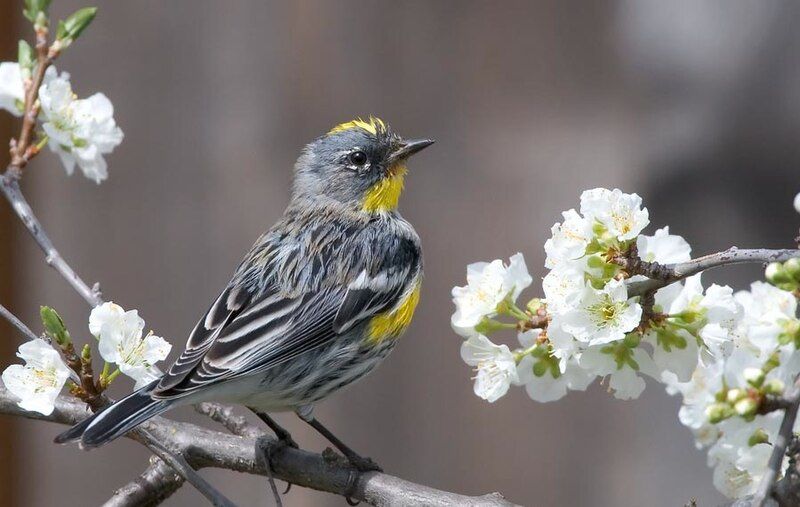
The yellow-rumped warbler is a species of bird that is found throughout North America. It is one of the most commonly observed birds in the region and can be seen in a variety of habitats ranging from woodlands and forests to wetlands and open fields.
The species is known for its yellow rump patch, which is usually the most visible part of the bird. It also has a grey or brownish-grey back and wings, a white breast, and a white chin with a black throat and bib.
It also has a distinctive yellow eyebrow stripe, which can sometimes be seen even from a distance. The yellow-rumped warbler is a year-round resident of North America, but it does migrate southwards in the winter months.
It feeds mainly on insects, but will also eat berries and other fruits when they are available. It is an important species in the food chain, as it helps to control insect populations, and also provides food for other species of birds.
| Kingdom | Animalia |
| Phylum | Chordata |
| Class | Aves |
| Order | Passeriformes |
| Family | Parulidae |
| Genus | Setophaga |
| Species | S. coronata |
24. Green Heron
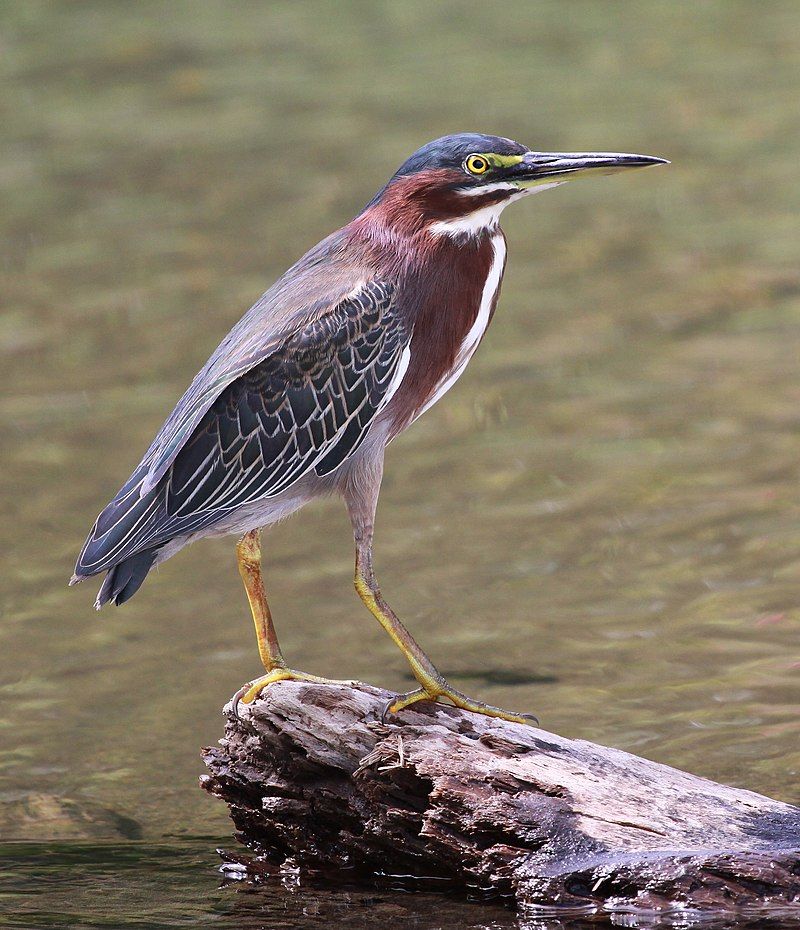
The green heron is a small species of heron found in North and Central America. Its scientific name is Butorides virescens, which comes from two sources.
The first part of the name, “Butorides,” is derived from the Middle English “butor,” meaning bittern, and Ancient Greek “-oides,” meaning resembling.
The second part, “virescens,” is Latin for “greenish,” which refers to the bird’s distinctive green plumage.
Green herons are often found in wetlands, where they hunt for fish and other small aquatic prey. They are solitary birds, usually only seen alone or in pairs.
Green herons are a medium-sized species of heron, growing to about 17 inches in length and weighing around 7 ounces.
They have long necks and legs, and their wings are brownish-gray in color with white underneath. The head and neck of the green heron are greenish-black, with a white patch on the throat.
Green herons are popular with birders, as they are relatively easy to spot and are known for their interesting behavior. They are especially adept at fishing, using their long, sharp bills to spear their prey.
They can also drop small objects, such as twigs and leaves, onto the surface of the water to lure fish closer. This behavior has earned them the nickname of “dipping heron.” Overall, the green heron is a fascinating species of bird.
Its scientific name, Butorides virescens, is derived from two sources: Middle English and Latin. Its green plumage and unique behavior make it a favorite among birders.
| Kingdom | Animalia |
| Phylum | Chordata |
| Class | Aves |
| Order | Pelecaniformes |
| Family | Ardeidae |
| Genus | Butorides |
| Species | B. virescens |
Conclusion
Birds in the East are a diverse and important part of the local environment. They provide a variety of ecological services, from pollination to pest control, and are an important part of the food web.
Their presence is also an important indicator of the health of the environment, so it is important to protect their habitats and ensure their populations remain healthy.